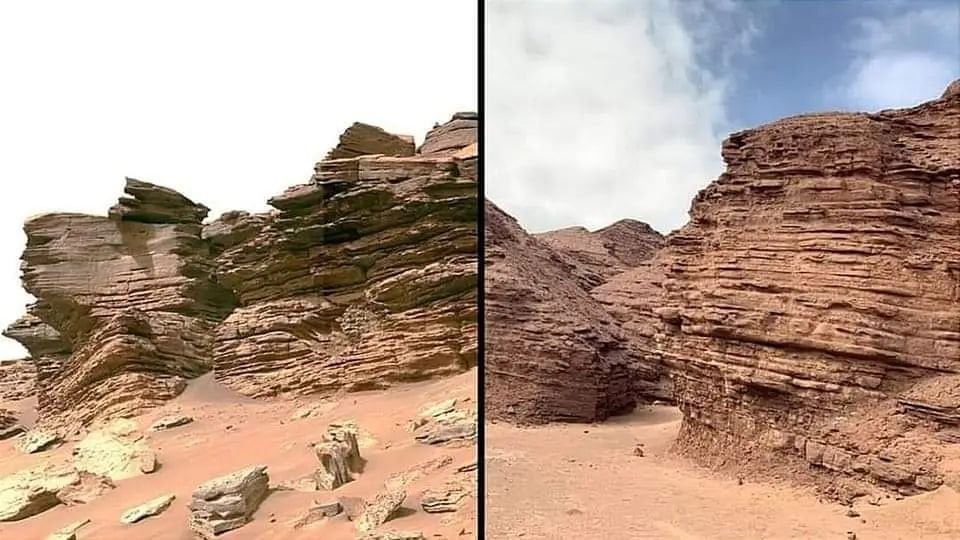Turns out rocks are rocks. (I'm a geologist I an I approve of this message)
Space
Share & discuss informative content on: Astrophysics, Cosmology, Space Exploration, Planetary Science and Astrobiology.
Rules
- Be respectful and inclusive.
- No harassment, hate speech, or trolling.
- Engage in constructive discussions.
- Share relevant content.
- Follow guidelines and moderators' instructions.
- Use appropriate language and tone.
- Report violations.
- Foster a continuous learning environment.
Picture of the Day
 The Busy Center of the Lagoon Nebula
The Busy Center of the Lagoon Nebula
Related Communities
🔭 Science
- !astronomy@mander.xyz
- !curiosityrover@lemmy.world
- !earthscience@mander.xyz
- !esa@feddit.nl
- !nasa@lemmy.world
- !perseverancerover@lemmy.world
- !physics@mander.xyz
- !space@beehaw.org
- !space@lemmy.world
🚀 Engineering
🌌 Art and Photography
Other Cool Links

Interesting that Dean Norris was on Mars and has a special interest in ~~rocks~~ minerals.
Hey you show some got dang respect. He knew it was an ugly planet, a bug planet, and he did something about it. No more bugs on Mars. You're welcome.
Those particular rocks seem to be sandstone, though... which would pretty much be proof of liquid water having existed at some point.
Rocks are rocks, sure... but rocks tell stories, and these ones are telling a story that, while common and somewhat uninteresting on Earth, is quite interesting indeed when told on Mars.
You are totally right. I was going to make a big post about how they actually formed but I deleted it halfway through. These rocks are definitely significant in that the same processes on earth happen on Mars so we can infer how they were deposited and formed. Hence my shitty first comment, rocks are rocks.

Aren't the layers in the rock showing that water was definitely present on Mars, and that they're formed by sediment being deposited and forming into sedementary rock over time?
I could be wrong, but I don't think so in this case. Water would likely create more variation in banding where some groupings of layers is present and distinct. What I see in the differences at higher levels appears to be from exposure to wind and solar temperature fluctuations due to exposure. It looks too linear from top to bottom. With water I expect those more distinct sections of banding like you see on the Earth pic side. Maybe there was a lot more or less rain for a time due to a mountain range that came and went, or a local sea or large water basin. Those layers are deep time and more like the slow accumulation of an average dust before wind patterns shift significantly or some event shifts the composition like exposure of a different large rock unit to winds regionally. It is hard for humans to grasp deep time like this.
I’m not a geologist but I’ve read up on it a fair bit.
This Mars photo appears to be sandstone.
On earth sandstone is usually associated with ancient rivers, lake shores, and sea shores. But also sand dune fields.
The thing with sandstone though, is it’s not just sand. Rather, it’s sand plus time plus pressure plus cementation.
Now, the time part is obvious. What’s sandstone now was sand a long ass time ago (usually).
Pressure? That’s a little harder to understand for me here. Has mars ever had tectonic stuff going on to bury it (and hence have pressure applied), followed by erosion and uplift? Or am I incorrect and pressure is not a necessary condition? Maybe sandstone without pressure is a thing it’s just weaker and/or less dense? Maybe layers of volcanic basalt or something could have a similar effect? I don’t know and would love to have someone more knowledgeable fill this part out.
Cementation? This part, I’m nearly certain, REQUIRES water. On earth anyway, this happens when ground water absorbs chemicals from other rock/stuff (for example carbonates from sea shells, but there’s lots of other chemicals that can do this), then flows through the beds of buried sand, and some of those chemicals are deposited along with magical chemistry stuff happening, and your sand becomes sand stone.
So I don’t 100% know that the short answer to your question is “yes”, but I’m leaning towards a solid “yeah, probably, but I’m not a real geologist and Mars isn’t a real Earth so I dunno”.
Apparently, sandstone takes FAR less time to form than most people think. Apparently, some sandstone deposits have been found with roman artefacts inside. They were normal sand at the time and turned to sandstone since then.
Basically, it would take far less time than you would think to form sandstone on Mars. It's still proof of liquid water, but the lower end of the time estimate can be FAR shorter than you first think.
Yup!
Sediment gathers at the bottom of a lake or sea. Builds up deeper and deeper layers. Each layer is formed by a sediment deposition event. Each layer you go down is going further into the past of that former water body.
Because sedimentary rock requires standing bodies of liquid to form, they are only found on Earth and Mars (and maybe Dragonfly will find sedimentary deposits on Titan which would be very different in chemistry).
Think so. That's what I came here to ask
I came to ask which picture is which then noticed the blue sky duh 😂
Or the title.
OMG I'm being leftright-shamed
Wheres the Gorn?
Looking for a big rock
They're gorn.
I've been to the Vasquez Rocks where that was shot. It's right by a freeway that definitely also existed in the 60s. They had to use some very creative camera work in terms of where they pointed it. It's kind of impressive.
Those clouds are doing a lot of talking in the picture on the right
That's how I figured which was which (I don't have the ability to quickly figure out left from right like most people have, so that left me time to play at guessing).
Looks like a nice day on Mars. Apart from it being -70C out.
So no Mr Bluesky on Mars?
If only he would tell us why he had to hide away, for so long :(
Where did we go wrong?
Mars has blue sunsets though.
I dont know what camera they used but that zoom is crazy
Captured on my Samsung Galaxy s22
If you find this interesting, you would probably enjoy the Mars Guy youtube channel. Weekly updates on the latest rovings of Perseverance.
Aeolian erosion do be like that though.
Mmmm that's some good choss! Do you happen to know where the photo on the right was taken? My geoguessr brain wants to put a pin on Kanab, Utah
I believe it's the Atacama desert in Chile, according to a reverse image search.
Mars looks like Southern California in Star Trek in the 60s.
Says a lot for how much they were able to accomplish thematically with environments like that. Iconic
i wonder if humanoid aliens would be a common thing throughout the universe
like a mass effect sorta thing
i was thinking more on the convergent evolution side, since the worlds seem to be similar? but panspermia is a cool concept too.
If it's gonna be convergent evolution, all the aliens are probably crab people
crab people crab people
